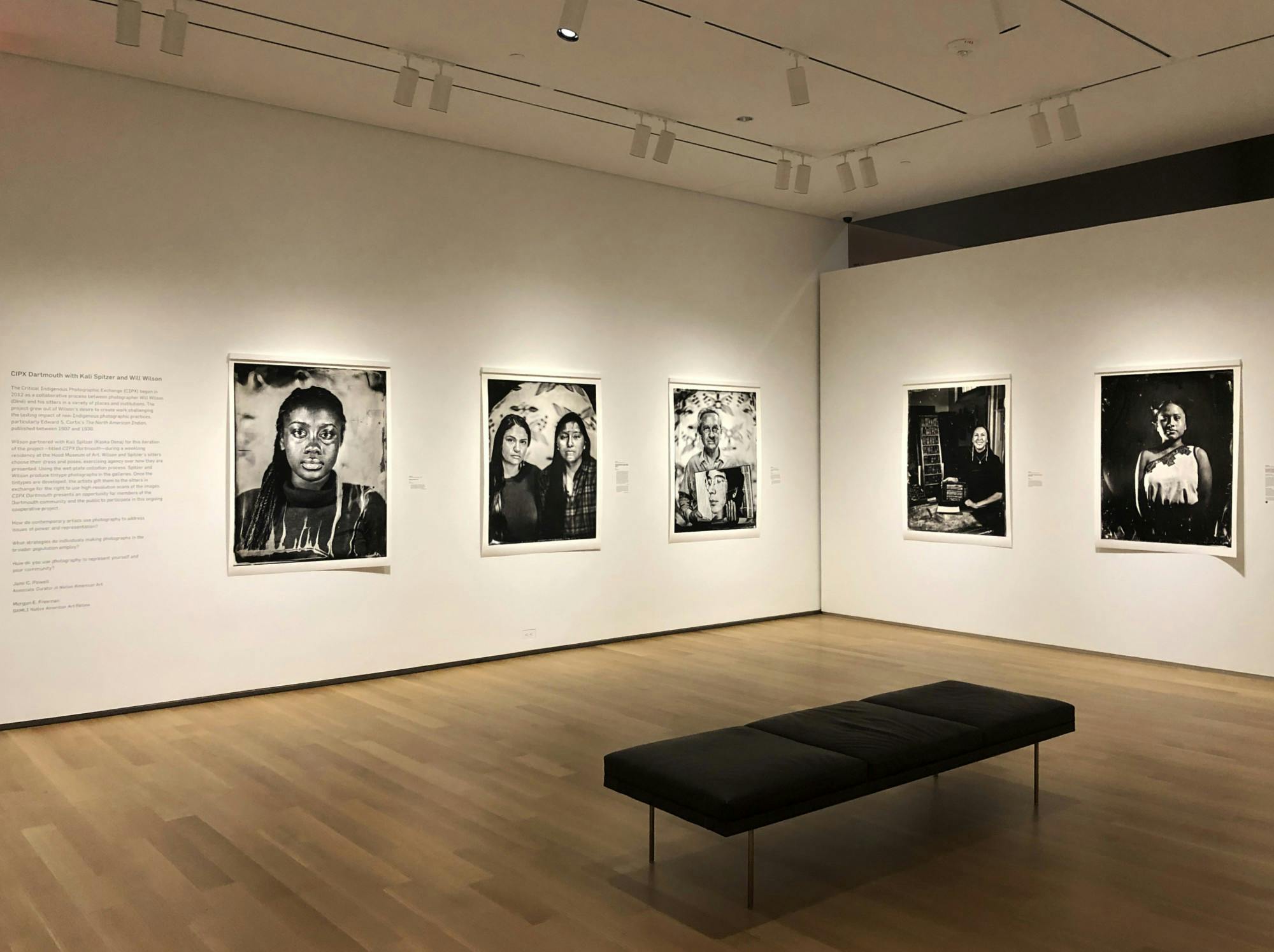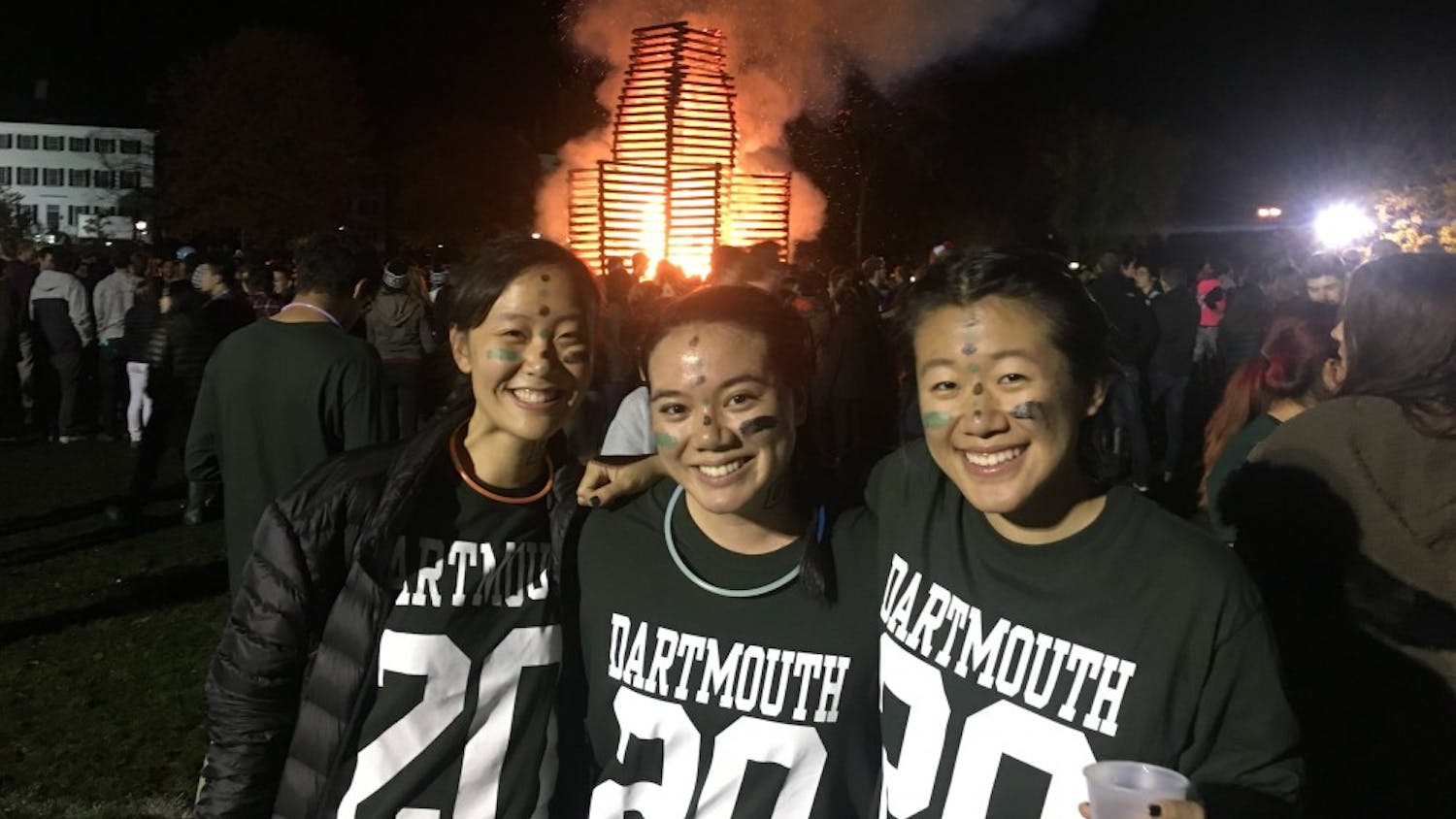Visitors to the Hood Museum can now view works from the CIPX Project. CIPX, the “Critical Indigenous Photographic Exchange,” was founded in August 2012 by photographer Will Wilson, who now collaborates on the works with photographer Kali Spitzer. The project is a direct response to staged portraits of Native Americans taken by Edward Curtis in the early 1900s.
CIPX aims to help members of the Native American community reclaim their own representations. Curtis shaped his presentation of Native Americans in accordance with the popular but inaccurate images of them at the time — arranging his subjects into specific poses and urging them to wear the “traditional” Native clothing he brought to his photoshoots. CIPX hopes to do the exact opposite. With CIPX, the photographer and the subject work together to present genuine perspectives through tintype photography, where the subject picks their own pose, clothing and caption.
“[Curtis] used these kinds of things as props to construct his idealized image of what Native people should look like,” said Jami Powell, the Hood’s associate curator of Native American art. “In response to that, Will and Kali invite people to wear whatever they feel most comfortable in. They certainly invite people, if they would like, to wear regalia, if they feel that’s what best represents them.”
While many came and were photographed in extravagant clothing, some were simply content to be photographed in their favorite everyday wear — as evidenced by one individual who wore their Grateful Dead shirt to the shoot.
Powell and Freeman helped bring CIPX to Dartmouth and helped organize the display of the exhibit. Although she had been following the project for several years before, Powell said she first interacted with Wilson’s work in 2016, while she was working for Tufts University. When Wilson came to Tufts, Powell was able to have her photo taken as part of CIPX.
“It was really a transformative experience for me as an indigenous person to sit for this portrait, using the same technology that my ancestors would have experienced,” Powell said. “I actually have a picture of my great-great-grandparents taken by the same type of camera. To see what that experience was like really transformed my understanding of a lot of these archival photographs. I wanted to bring that here.”
CIPX involves members of the community by featuring them as subjects of the portraits being taken. At Dartmouth, some of these photos were taken by Wilson and Spitzer in the Hood Museum.
“I wanted to do a project that really engaged the Dartmouth community in a different way,” Powell said. “I wanted to create the idea that museum spaces can be places where artists are creative, not simply where it’s displayed, and to show the work that artists are doing in a different context.”
Wilson and Spitzer’s work specifically tried to feature the Native American community of Dartmouth as subjects, while also including other diverse perspectives on campus.
In order to achieve this, Powell said that they sent invitations out to various Native American groups at Dartmouth, as well as the Museum Club and their interns. They also had a lottery for Friends of the Museum and invited lucky students who happened to pass by the shoot in the library to have their photo taken. The result is an eclectic assortment of subjects in the exhibit.
One of the students who happened to be invited to participate as a subject was Breanna Boland ’23. Although Breanna is not a member of the Native community, she said she learned about the project while in the library and wanted to get involved.
“I was just walking through Baker-Berry,” Boland said. “There was a tent setup and a table with some people who were giving students information. I thought it was really interesting, so I literally just walked up and asked what it was. That’s how it got started and how I signed up.”
Participants were also encouraged to choose and create the captions for their portraits. When Boland went to get her portrait taken, she brought along the caption she had written about her outfit and hairstyle choices that day. This caption, which can be found alongside her portrait in the Hood Museum, reads, “My deep blue cashmere turtleneck represents the deep blue oceans that my enslaved African ancestors travelled across to reach Jamaica. My braids are also distinctive of African culture.”
“That morning, I looked in my wardrobe, and I thought a cashmere sweater would be nice,” Boland said. “I wanted to show the dichotomy of where my slave ancestors came from and the fairly elitist institution that I am at now, with cashmere.”
Boland was one of 167 people photographed through CIPX Dartmouth. Ten of these portraits are currently featured at the Hood Museum. The curators worked with artists — Wilson and Spitzer — to pick the most moving portraits to display. Powell mentioned Boland’s portrait as one of the particularly powerful pieces.
“Some of the works were just ones that, immediately, as soon as the plate was developed, we thought ‘Oh, this is incredible,’” Powell said. “I’m thinking of the one that Will did of Breanna Boland. The plate had this really interesting place where the collodion streaked, creating this interesting effect. The way that the process itself works is that the lens has a really shallow depth of field. You have to hold completely still once they get it focused to get the detail. Boland’s was one where the focus is just really laser-centered on the individual’s eyes. It creates a really striking image.”
Curatorial fellow Morgan Freeman, who first met Powell when she was a student at Tufts, also felt the selected portraits to be very engaging.
“There are these moments where you’re face to face with an individual, and it feels like a very intimate moment,” Freeman said. “The person is allowing you to fully see them in a way that you don’t always get to, especially with the label that’s provided in their own words. That is an element to what you take away from this exhibition.”
Freeman went on to note that the photographing process is much less of an extractive one like those where the photographer constructs the image of the subject that they want, and more of collaboration because the subject portrays themselves and recieves a tintype plate of their portrait once their done in exchange for sitting for the photo.
The works of CIPX Dartmouth will be on display at the Hood Museum until March 29.



